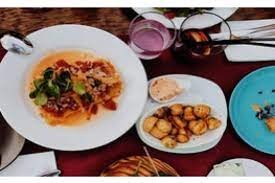A manual for efficiently creating menus
In the fast-paced realm of culinary arts, creating a menu is an intricate skill that calls for a chef’s careful preparation and astute observation. Here, Chef Vishwanath Narake breaks down the fundamental components of the art of menu planning:
Comprehending the Business Environment:
The cost of the meal and the food service operation’s financial objectives serve as a chef’s initial canvas. This requires striking a careful balance between continuing to be profitable and providing high-quality components. The following step is production capabilities, which takes into account the staff and equipment that are available as well as making sure that the menu is in line with the kitchen’s capacity.
Adapting to Service Dynamics: An important consideration is the kind of service and the meal delivery mechanism. A fast-casual setting may need a different strategy than a fine-dining institution. This factor guarantees that the menu fits with operational efficiency and enhances the eating experience.
Balance in the Availability of Ingredients:
Without taking ingredient availability into consideration, a chef’s symphony is incomplete. Seasonal vegetables helps control expenses in addition to adding freshness. A cuisine that is both harmonic and sustainable is guaranteed by a careful approach to ingredient procurement.
Philosophy as the compass:
The North Star is the company’s and the foodservice operation’s ideology. The menu need to represent and accentuate the general vibe of the restaurant, whether it a devotion to global culinary fusion or a focus on locally sourced and organic ingredients.
Pricing as a Note with Fine Tuning:
Appropriate price is essential for striking a balance between the dish’s perceived worth and manufacturing costs. In addition to drawing clients, a smart price strategy keeps the company financially stable.
Selection of Materials:
Selecting the ideal background for a painting is similar to choosing the appropriate materials for the menu. To provide customers an immersive dining experience, the menu should match the establishment’s design and atmosphere.
Logical Architecture for a Smooth Experience:
The goal of logical menu design is to create a flow that leads guests through a smooth and enjoyable gastronomic experience. Sorting the meals into logical groups according to their taste profiles or courses makes it easier for customers to browse the selection.
Phrases that Tease:
Because the words are the brushstrokes that create a vivid image of the meal, keep them attractive. Descriptive language is a culinary tool that not only tantalises the senses but also sheds light on the skill of the chefs who create each dish.
Featuring Signature Recipes:
Highlight your standout meals as the main attraction. These are the standout performers who both set the restaurant apart and define the chef’s talent. By arranging them thoughtfully on the menu, you can make sure they get the attention they merit.
Comments: The Current Discussion:
Getting input from customers is like an artist asking for criticism. It offers insightful information on what functions well and what needs improvement. Constant improvement is guided by feedback from customers, thus the menu changes to reflect the changing tastes and preferences of the patrons.
In summary, creating a menu is a work of art that is always growing rather than a set procedure. A chef’s viewpoint combines a careful blending of business sense, inventive cooking, and a steadfast dedication to client happiness. Achieving a harmonic balance that entices the palate, captures the heart, and preserves a vibrant culinary heritage is the art.







